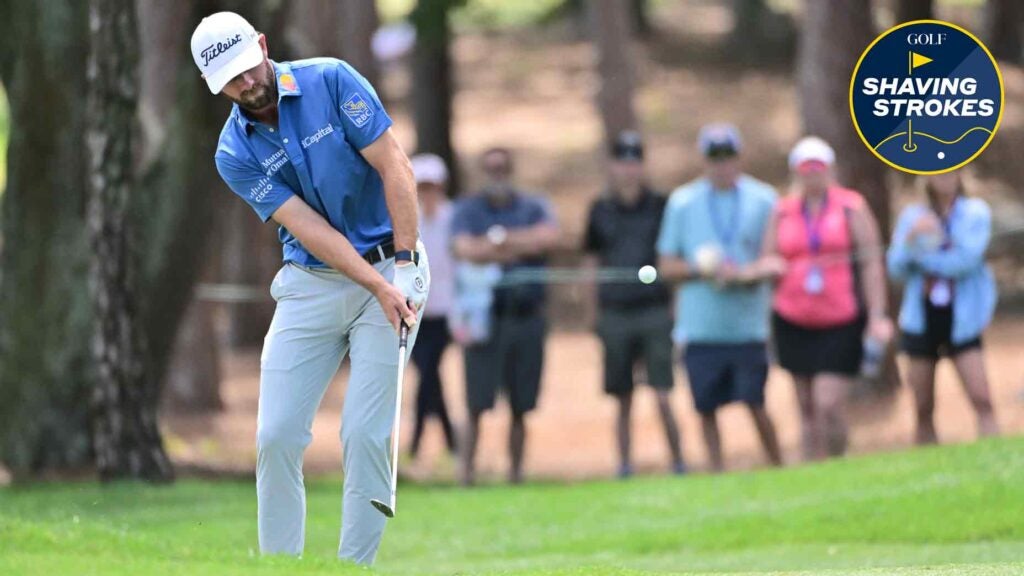Welcome to Shaving Strokes, a GOLF.com series in which we’re sharing improvements, learnings and takeaways from amateur golfers just like you — including some of the speed bumps and challenges they faced along the way.
I can’t tell you how many times I mishit my wedge shots from around the green. I can play a hole nearly perfectly, then I get within 15 yards of the green and the entire thing just falls apart.
Chunks, skulls, you name it, I’m more than likely going to have it happen about half of the time — which is absolutely insane to even think about.
So what’s the issue? My inability to get the low point of the club to brush the grass, which allows for ball-first contact and helps get my shot into the air.
But I’m not the only golfer guilty of this, as it’s a common problem for most amateur players. So I tapped GOLF Teacher to Watch TJ Yeaton to get his help on how to stop the madness when hitting wedge shots — and finally alleviate the issue once and for all. Check out his tips below!
How to fix this common wedge shot issue
So you’re near the green and all that’s left is a little wedge shot. The hard part is (seemingly) over with — and then a frustrating chunk, skull, or top occurs. You wear the disappointment on your face, asking yourself why this type of shot is so hard.
According to Yeaton, the most common problem with wedge shots is managing the location of the club at the bottom of the swing. Quite frankly, it’s just not something that most amateurs understand.
“Let’s first become familiar with two important concepts: The low point and the height of the club off the ground (known as arc height),” he tells me.
“Due to the upward tilt of the clubface (loft), the only way to achieve center-face contact is to have the clubhead traveling down towards the ground nearing impact. This is known as the attack angle. So as the club is traveling down towards the ground, we need the low point to occur after impact.”
This might sound and feel different than what most golfers believe, with many thinking that the club has to be moving upwards at impact to get the ball in the air. But this scooping motion is contributing to such poor results.
“[When scooping like this], it causes the wrists to move from side-to-side, and bends the elbows in an attempt to move the clubhead up,” Yeaton adds. “What results is a clubhead that initially went from moving towards the ground to rapidly moving away from it. This makes it nearly impossible to hit the clubface in the correct spot, as the clubhead’s now located too high off of the ground and away from the ball.”
So what’s a good way to fix this? Yeaton offers a simple practice drill.
“Stick a tee in the ground, having it barely come above the surface of the ground. Then put your ball on it,” he says. “Now, take some swings, learning how to clip both the ball and the tee, making sure you hit the ground shortly after impact.
“This drill will teach you how to manage both the arc height and the angle of attack, resulting in more consistent wedge shots.”
